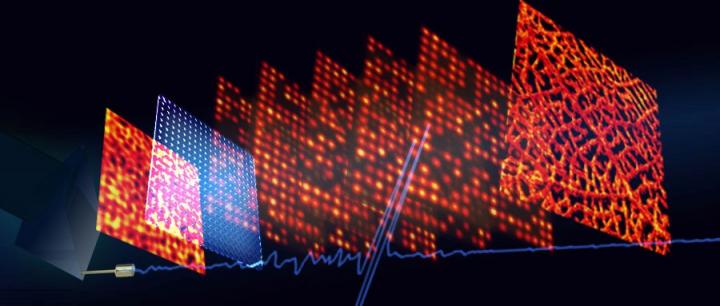
Credit: by Yang Li, Terence T. W. Wong, Junhui Shi, Hsun-Chia Hsu, and Lihong V. Wang
Optical-resolution photoacoustic microscopy (OR-PAM) is a powerful imaging tool with a superb ability to image rich optical absorption contrast in biological tissue. Most OR-PAM systems today rely on mechanical scanning to form an image, which restrains their imaging speed. To overcome the restraint, multifocal OR-PA computed tomography (MFOR-PACT) had been developed by utilizing a microlens array with multiple optical foci and an ultrasonic transducer array to detect PA signals in parallel. However, previous MFOR-PACT systems are complex and costly due to the use of an ultrasonic array and the associated multi-channel data acquisition system.
In a new paper published in Light: Science & Applications, a team of scientists, led by Professor Lihong Wang from Caltech Optical Imaging Laboratory (COIL), Andrew & Peggy Cherng Department of Medical Engineering and Department of Electrical Engineering, California Institute of Technology, Pasadena, USA, have developed a two-dimensional (2D) MFOR-PAM system utilizing a 2D microlens array for optical excitation and an acoustic ergodic relay to simultaneously detect the PA responses to the multifocal optical illuminations with a single-element ultrasonic transducer. This system, referred to as multifocal optical-resolution photoacoustic microscopy through an ergodic relay (MFOR-PAMER), can shorten the scanning time by at least 400 times compared to conventional OR-PAM systems at the same imaging resolution, while maintaining a simple and economic setup.
This novel MFOR-PAM system is centered around a key enabling element known as the acoustic ergodic relay (ER). For PA imaging, an ER–such as a light-transparent prism–can be used as an encoder to transform PA signals from different input positions into unique temporal signals. By recording the system impulse response of each input position in advance, the PA signals from the entire field-of-view can be detected in parallel upon a single laser shot. Then, the encoded PA signals can be decoded mathematically to reconstruct a 2D projection image of the object.
In addition, the system uses a microlens array to focus a wide-field laser beam into multiple optical focal spots. Unlike a conventional focusing lens that needs to scan a single optical focal spot across the entire FOV, the microlens array can reduce the time required to form an image by scanning multiple optical focal spots altogether.
These scientists summarize the operational principle of their system:
“Since the excitation pattern through the microlens array is known, each optical focal spot can be computationally localized. By combining the microlens array with the ergodic relay, we can improve the acoustically defined image resolution of the system to the optically defined image resolution, and improve the imaging speed by a factor equal to the number of microlens elements.”
“Our MFOR-PAMER system has promising potential for many biomedical applications, such as utilizing ultra-violet (UV) illumination for high-speed, label-free histological study of biological tissues. This design can reduce the imaging time from several hours (with a conventional UV OR-PAM system) to less than a minute, significantly improving the efficiency of clinical histology and diagnostics.” the scientists forecast.
###
Media Contact
Lihong V. Wang
[email protected]
Related Journal Article
http://dx.




